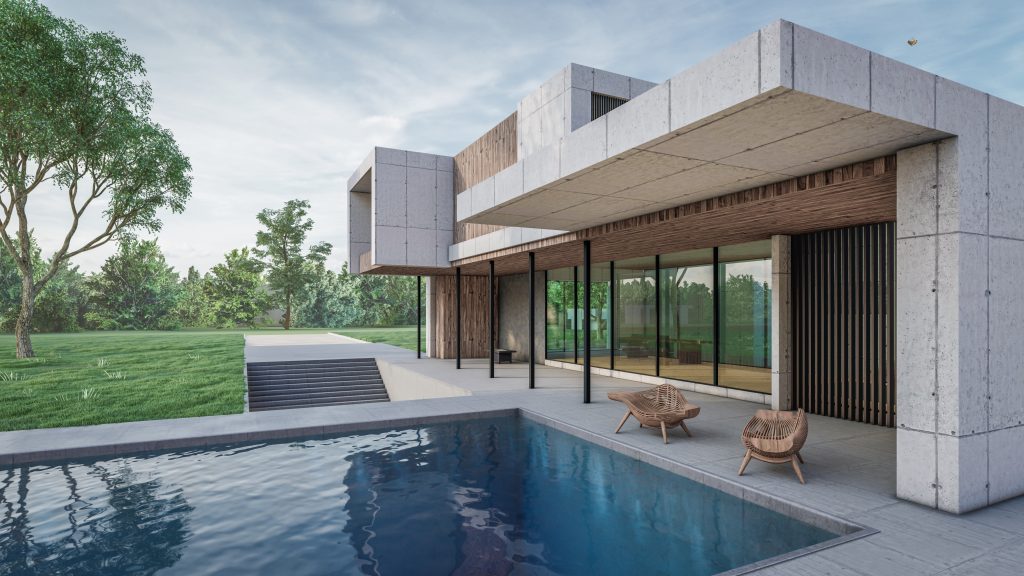Experience your finished projects before even breaking ground.
Augmented reality (AR) and virtual reality (VR) are revolutionizing the architecture industry by allowing designers to experience their visions in real life through a 3D model. While AR and VR are similar and often grouped together in conversation, there are significant differences between the two technologies. AR gives us the ability to apply a digital overlay to our real-life environment. VR is a computer generated environment that you can explore and interact with. Both technologies offer exciting potential for the advancement of processes and opportunities in the architecture and construction sector.
Augmented reality
How does it work?
Augmented Reality (AR) can provide architects with the ability to digitally interact with their projects past the computer screen by merging a digital model over a physical space. AR creates a 3D version of the proposed model and places it over the physical reality in the project’s real environment. It can even overlay the digital rendering over a current structure that is in the plot of land in real life. The merging of the digitized structure and the physical plot of land allows architects to visualize their proposed space before it is even built.
Why use AR for projects?
AR significantly eases the planning process for designers. The ability to present clients with the proposed structure as a 3D model helps them better understand and decide what they want. Another benefit of AR is that it can also be used for design analysis. Designers and clients can recognize issues much earlier on in the construction process, saving them major headaches down the road.
AR is most beneficial when used in collaborative team environments. The ability to collectively and cohesively visualize a project keeps everyone on the same page and generates constructive conversation. AR can be used to superimpose ideas and notes onto a project model. This saves time and money that could have gone to waste.
Along with planning and collaboration, AR helps architects and builders at the site of the project. Software can be downloaded onto tablets and smartphones to show the structure in that space. This gives builders the ability to solve problems and make changes quicker than if they couldn’t visualize their ideas.
Virtual reality
How does it work?
Virtual reality is making huge waves in the architecture industry, especially as it becomes more accessible to the average consumer and firm. VR is generally experienced by wearing a headset that completely covers the user’s eyes and fully immerses them into a virtual environment.
Why use VR for projects?
VR can bring remote teams together by virtually placing them into the same space, an event that architects have dubbed “VR jams.” These are virtual meetings where multiple people can “walk” through buildings and rooms together before they are actually built.
VR acts as a communication tool. Rather than trying to describe an idea to a client, they can experience it through the virtual model. This helps the client better understand the concept of the proposed space, and enhances their overall experience, improving customer satisfaction.
Vanessa Quirk with Metropolis Magazine says, “By building this kind of expertise, some firms think we will revolutionize not only the way we conceptualize designs, but also the way our world is physically built and experienced.”
VR blends the boundary between reality and the virtual world. VR allows architects and engineers to take situations that we can’t see or predict, such as natural disasters, one step further. They can put the structures into the VR simulation to test how it can react in these situations. This gives architects and designers a unique ability to plan ahead.
Technology is transforming architecture
The technological renaissance is transforming industries in ways we’ve never before imagined. The architecture and building sectors have an immense opportunity to grow with these innovations and implement them to improve existing practices. Companies that utilize these technologies to optimize their processes and bring their visions to life will set themselves apart as leaders in the architectural revolution. If your firm has been toying with the idea of incorporating VR and AR technologies into your practice, now’s the perfect time.


